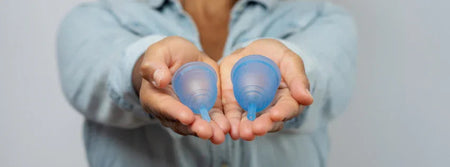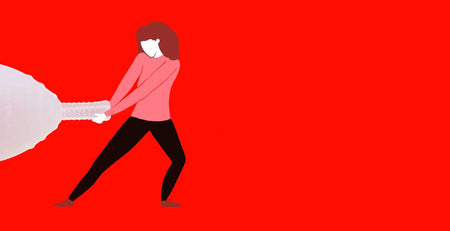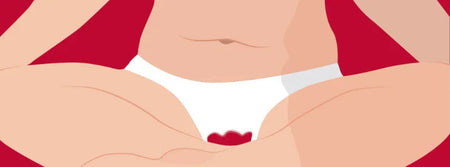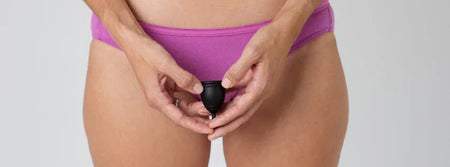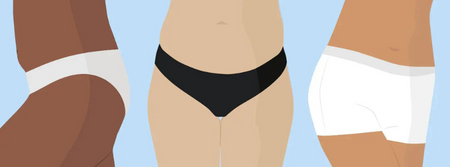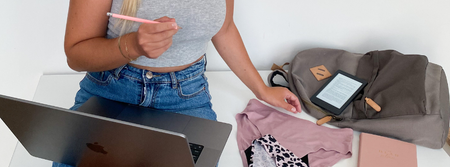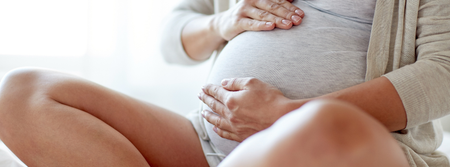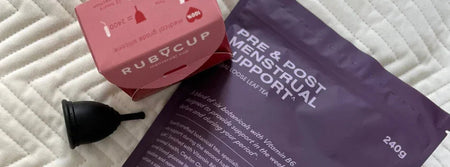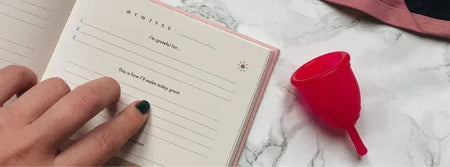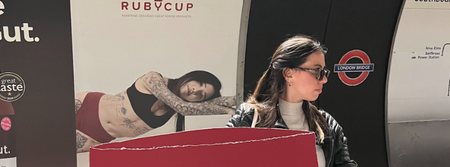Let’s take sustainability and zero waste to the next level. It is, after all, the month of Plastic Free July. Spending many hours on your period every month, you may have wondered if all the blood and bodily secretions you discharge can somehow be repurposed and put into meaningful use. If that’s the case, the answer is yes.
Some more radical than others, there are actually quite a few suggestions out there on how and why your period should be good for one thing or another (anti-inflammatory period facials and progressive art, to name a few).
In our preparation for Plastic Free July, we’ve been trying out menstrual blood as a natural and very zero waste plant fertilizer. The menstrual cup is the ideal tool for collecting fresh, uncontaminated menstrual blood.
Your plants need phosphorus, potassium and nitrogen
For your plants to live their best life, on top of access to sun, shade and water in the right proportions, they also need minerals such as potassium, nitrogen and phosphorus every now and then.
The ideal relative measurement between the three substances is two parts phosphorus to one part potassium and one part nitrogen (50%, 25% and 25%) per round of fertilizing. Here’s what each substance does for plants:
- Phosphorus: For the process of cell division and producing fruits or flowers, plants need phosphorus. Therefore, if you have a plant that stops to flourish, you should try giving it some phosphorus.
- Potassium: Potassium helps the plant be in control over its vital functions and makes it more resistant to cold, dryness and touches.
- Nitrogen: Plants need nitrogen for producing proteins, growing and staying green. If the leaves of your plants turn yellowish or just more pale than usual, this might be due to a lack of nitrogen.
These nutrients exist in (nutrient-rich) soil, but can get used up over time making soil fertility decrease, which is why you’ll want to turn to fertilizers every now and then.
Many plant fertilizers out there are inorganic and come in plastic packaging. Your period is the opposite: Organic matter that comes with no wrapping or boxing. And just like store-bought plant fertilizers, your period blood contains rich minerals that can help your plants thrive. That’s why fertilizing plants with your period is a great Plastic Free July activity.

What’s in your period flow?
Your period flow does not merely consist of blood. Blood makes up about half of your period, and the other half is made up of endometrial tissue, cervical mucus and vaginal secretions.
In total, this mix consists of a lot of water (as much as 90% of the blood part of the mix, plus some amount in each of the other substances). But since water is easily accessible to many, what’s more interesting in terms of viewing the period flow as a zero waste plant fertilizer is of course what’s also in there. The minerals. And they are plentiful.
Here’s a list of just what’s in your red blood cells (the main part of your blood):
- Zinc
- Calcium
- Copper
- Magnesium
- Selenium
- Potassium
- Chromium
- Manganese
- Vanadium
- Sodium
- Iron
- Molybdenum.
Despite not being present in your red blood cells, both nitrogen and phosphorus are also to be found in your period. Nitrogen is produced by your liver as a waste product from the break-down of protein. Your blood carries the waste product around with the purpose of transferring it into your urine so that it can naturally leave your body. Because nitrogen is carried around by your blood, it is also in your period that helps you discharge it.
Phosphorus is mainly found in your bones, but also in small amounts in your body’s tissue and blood, thus also in your period flow.

Nourish your plants with your nutrients
Knowing that your period blood contains the nutrients for your plants to stay happy, here’s how you go about fertilizing them.
- Step 1: Collect your period flow in your menstrual cup.
- Step 2: Mix one part period flow with two parts water. (Your period is organic, living tissue. You’ll want to make sure that the mixture becomes as liquid as possible so that it dissolves into the potting soil - it can turn bad if you leave it exposed to oxygen for long. Another reason for mixing it with water is to lower the salt contents, as your plants would not be happy getting too much salt, proportionally speaking.)
- Step 3: Water your plants with the mix right away.
- Step 4: Remember to stick to your normal plant care routine (your plants need sun, shade, water. Also, help relieve them of any leaves they might have that have turned dry, brown or yellow).
Give your plants a few months with a monthly mineral boost from your zero waste menstrual blood fertilizer and an overall good care routine, and wait for the result to kick in.

Plant your moon: Your period blood is life-promoting
Stick to your new plant routine that includes natural and zero waste menstrual blood fertilizer for a few months, with one monthly shot of fertilizing. Your plants are gonna love it.
It probably does not come as a surprise, when you think about the function of your menstrual cycle in general: Yes, period blood is life-promoting. With your own natural and organic zero waste plant fertilizer, you’ll make your plants wish that you were on your period all the time.
The practice of fertilizing plants with blood is used on a much larger scale than in private households. For instance, so-called ‘blood meal’ (fertilizing powder made from non-human blood) is used by farms producing organic foods. According to De Lune, Greenhouse Operations Manager of Pure Green Farms Matt Gura expresses: “Plants thrive in organic matter because it provides the perfect balance of mineral nutrition. Blood meal is a popular and effective fertilizer in organic production. Period blood is quite similar. Why waste it if you have house plants you want to boost!”
In the times before recent day period products existed, it was a widespread practice throughout Peru, Mexico and North America to mix blood with earth in order to make earth more fertile. This ancient ritual of ‘planting your moon’, or ‘seeding your moon’ (a Brazilian Portuguese expression), you can take part in together with your house plants. And that’s actually pretty beautiful.

Written By Valentina Carrara
Valentina has been part of the Ruby Cup team for many years and is our go-to expert on menstrual cups. With plenty of knowledge and experience, she’s passionate about helping people understand how menstrual cups work and why they’re a great option. If you have any questions or doubts, she’s always happy to help: Just drop her a message at hello@rubycup.com.





